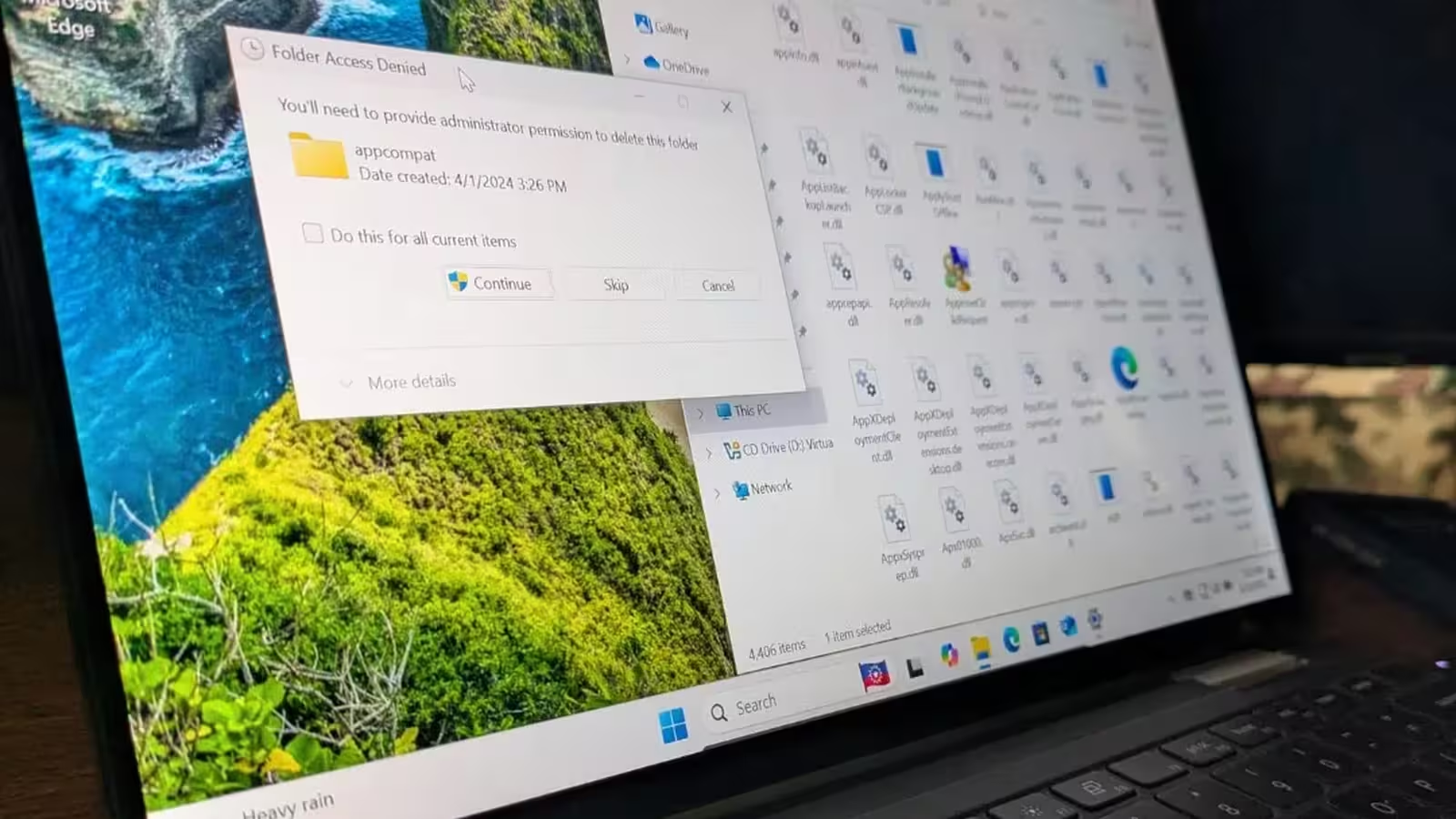3 Minutes
Exploring the Critical Importance of the System32 Folder
For seasoned tech professionals and everyday Windows users alike, the System32 folder under C:\Windows\System32 is one of the most vital components of the operating system. Introduced with Windows 2000 and still fundamental in today’s Windows 11, this directory houses essential files like DLL libraries, executable files (EXE), system drivers, registry keys, and core administrative tools such as Task Manager and Performance Monitor.
Despite how simple it might seem, deleting the System32 folder is not a harmless act of curiosity or a harmless prank — it risks total system failure and irrecoverable data loss.
System Safeguards: How Windows Prevents Catastrophe
Microsoft has built multiple safeguards into Windows to prevent users, even those with administrative privileges, from deleting the System32 folder. Any standard attempt through File Explorer is immediately blocked with a permission error. However, advanced users might experiment with command-line tools like PowerShell, adjusting file ownership and permissions to bypass these restrictions.
A recent demonstration by the tech team at XDA-Developers revealed that even with elevated permissions, deleting System32 via PowerShell caused rapid destabilization — the Start Menu, Task Manager, and other vital programs became inoperable almost instantly.
The Aftermath: Irreversible System Damage
Once key files from System32 are deleted, none of Windows’ built-in recovery or repair options (including Advanced Boot Menu tools or Repair Install) can restore the operating system to a working state. The only remaining solution is a complete reinstallation of Windows, which means users permanently lose their applications, custom settings, and potentially their files.
Why Deleting System32 Is Never Worth It
Some Internet “pranks” claim that removing System32 can speed up Windows or free space. The reality is starkly different — deleting this folder delivers no benefit and results in irreversible damage. The System32 directory is the backbone of the Windows OS, providing foundational support for running both user and system-level processes.
Product Features, Comparisons, and Best Practices
Unlike other system folders (like SysWOW64 or WinSxS), System32 is non-negotiable for Windows performance and stability. Tech professionals advise that any recommendation to delete this folder is either a dangerous joke or outright malicious. In comparison, routine disk cleanup or using legitimate optimization software are far safer and more effective for improving system performance.
Market Relevance and Takeaway for IT Users
Understanding the critical role of System32 reinforces cybersecurity and user best practices in the Windows ecosystem. With the rapid innovation in digital transformation, maintaining robust knowledge of system architecture becomes ever more important for IT professionals and enthusiasts.
In summary: Removing System32 is effectively pulling the plug on your entire OS. This folder is indispensable for modern computing, and any attempt to tamper with it means saying a permanent goodbye to your Windows installation.
Source: xda-developers



Comments